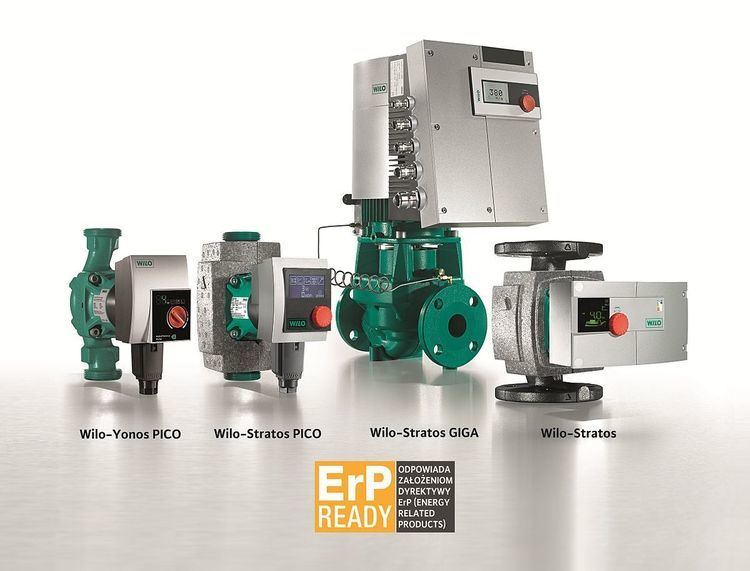 | ||
A circulating pump – a device that causes the flow of liquid (e.g. water or aqueous solutions, mostly glycol) in circuits (primary or secondary) of heating or cooling installations. The circulating pumps are used only as centrifugal pumps. The basic elements of the centrifugal pump are coiled housing with two ports, suction and discharge, and what is more, blade rotor mounted on a shaft driven be an electric motor. The ports of the circulating pump can be arranged in one axis (in-line circulating pump, typically suitable to be built directly in the pipeline) or suction axis that can be perpendicular to the axis of discharge port (the so-called circulating radial pump). The mechanical energy delivered to the circulating pump via motor is transmitted through the rotor to the liquid flow causing the increase in pressure (potential energy) and speed (kinetic energy). The energy increase of the liquid occurs only in the circulating pump rotor, which is the only element of the energy transmission. However, in the remaining parts, one type of energy changes into another e.g. kinetic energy into pressure energy. For instance, in the coiled shaped housing, part of kinetic energy changes into potential energy, which causes a further increase in the fluid pressure. Pressure generated by the pump is used to overcome resistance of the liquid flow through the heating or cooling circuit. During the pump operation, there is a drop of the liquid flow in the center of the rotor, causing the inflow of the liquid through the suction port. In the event of an excessive pressure decrease, in some parts of the rotor, the pressure can be lower than the saturation pressure corresponding to the temperature of the pumped liquid, causing the so-called cavitation, i.e. liquid evaporation. To prevent this, the pressure in the suction port (at the inlet of the pump) should be higher than the saturation pressure corresponding to the liquid temperature by the net positive suction head (NPSH).
The following parameters are characteristic for the circulating pumps: capacity Q, pump pressure ∆p (delivery head ∆H), energy consumption P with pump unit efficiency η, impeller rotational speed n, NPSH and sound level L. In practice, the graphical relationship between the values Q, ∆ p(∆H), P and η is used. These are called the pump curves. They are determined by studies, whose methodology is standardized. These curves are specified when water is pumped with a density of 1000 kg/m3 and kinematic viscosity of 1 mm2/s. When the circulating pump is used for liquids of different density and viscosity, the pump curves have to be recalculated. These curves are provided in catalogues and in operation and maintenance manuals, however their stroke is the subject of pump manufacturers warranty.
